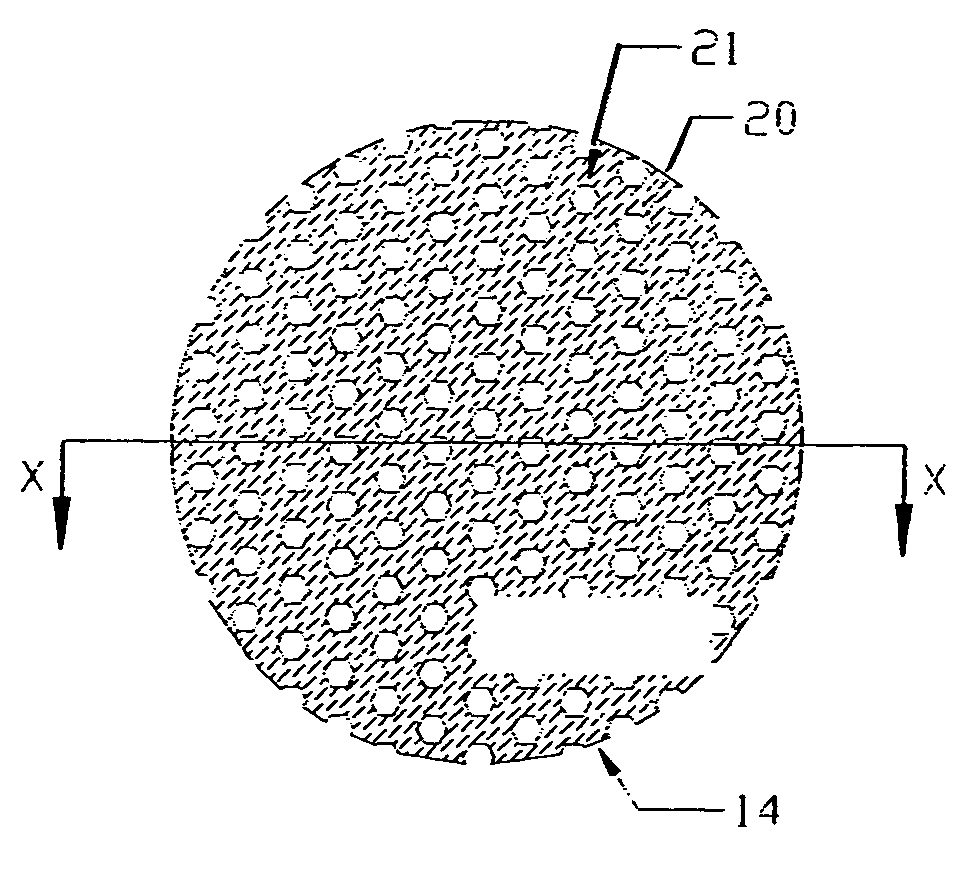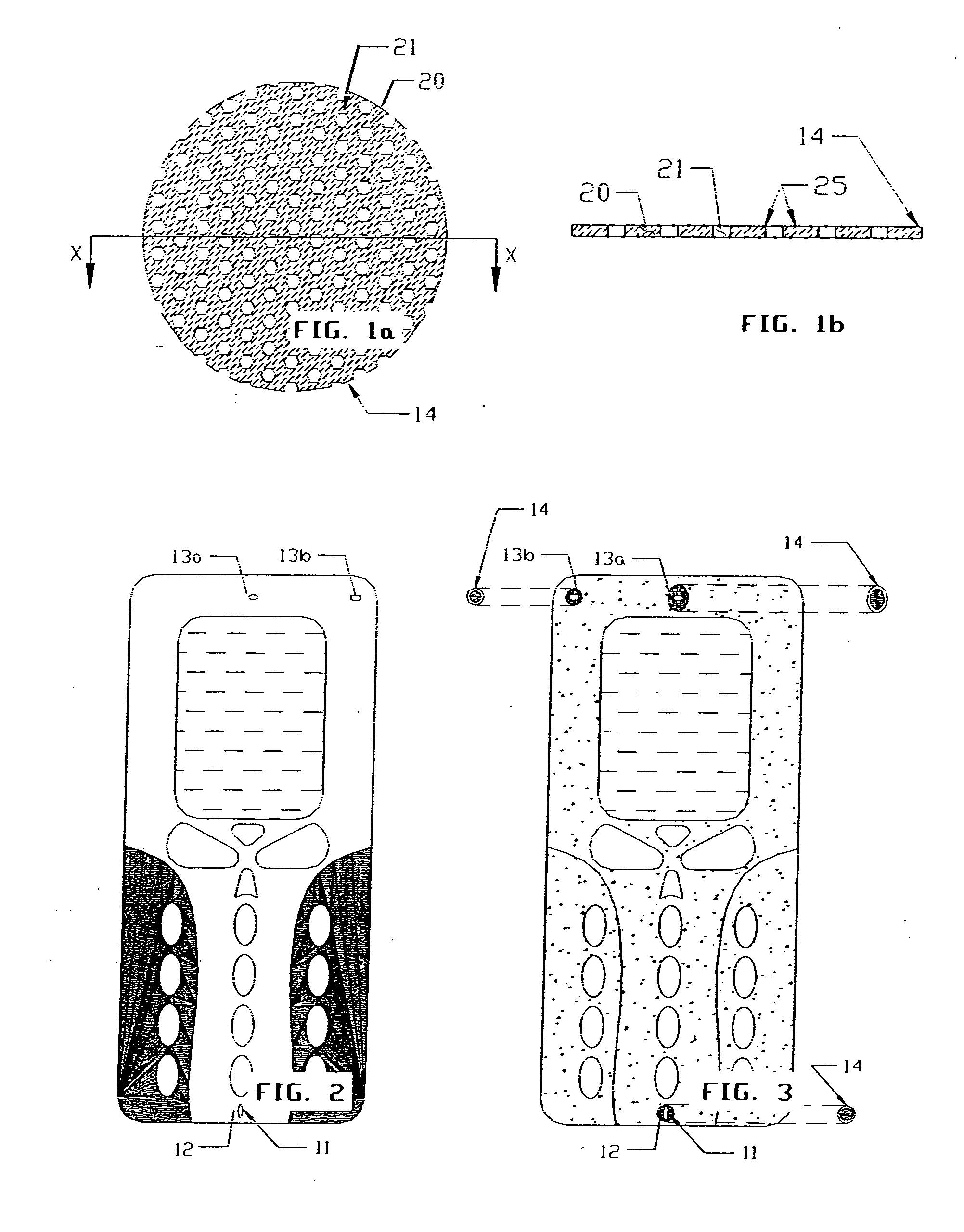Protective acoustic cover assembly
a technology of acoustic cover and assembly, which is applied in the direction of electrical transducers, casings/cabinets/drawers, casings/cabinets/drawers details, etc., can solve the problems of not protecting the acoustic transducer from incidental exposure to liquids (e.g., spills, rain, etc., and tight pore structures
- Summary
- Abstract
- Description
- Claims
- Application Information
AI Technical Summary
Benefits of technology
Problems solved by technology
Method used
Image
Examples
example 1
[0077] Hydrophobic Perforated Nickel Foil
[0078] A perforated nickel foil material manufactured by Stork Veco B.V. was provided comprising the following nominal properties: thickness—0.0005″ (12 micrometers); average maximum pore size—87 micrometers; percent open area—45%. A disc, 35 mm diameter, was cut from the material. A treatment was prepared using Teflon AF fluoropolymer from DuPont. The treatment consisted of 0.15% by weight of the Teflon AF in 99.85% by weight solvent, which was TF5070 from 3M. An adequate amount of coating solution was poured into a petri dish and the sample was fully immersed using tweezers. The sample was subsequently suspended in a fume hood for approximately 10 minutes. Specific acoustic resistance and reactance, along with I-WEP were tested according to the test methods outlined above. A comparison of the results from these tests are shown in Table 1 along with the material properties of thickness, and average maximum pore size.
PUM
 Login to View More
Login to View More Abstract
Description
Claims
Application Information
 Login to View More
Login to View More - R&D
- Intellectual Property
- Life Sciences
- Materials
- Tech Scout
- Unparalleled Data Quality
- Higher Quality Content
- 60% Fewer Hallucinations
Browse by: Latest US Patents, China's latest patents, Technical Efficacy Thesaurus, Application Domain, Technology Topic, Popular Technical Reports.
© 2025 PatSnap. All rights reserved.Legal|Privacy policy|Modern Slavery Act Transparency Statement|Sitemap|About US| Contact US: help@patsnap.com



